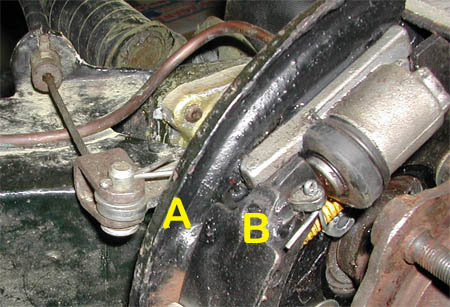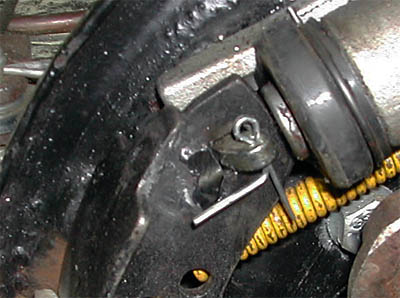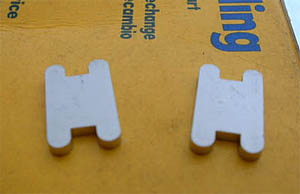
Drum Handbakes
Ahh, the handbrake. That rather strange afterthought that Lotus nailed together from spare offcuts of steel and wire that they had lying around after someone had told them they couldn’t sell cars without a parking brake. Boy, does it give me grief, but this year I’m going to get it to work properly. I’m an engineer and this is just nuts, bolts, wire and bent metal so a logical approach will sort it out.
I’m an optimistic soul.
First job is to check the cable isn’t binding, yes, that’s smooth and free. Remove the drums, check the linings and give everything a clean. Remove the bottom adjuster to make sure that’s working. So…. logically, if I RTFM* it’s going to work ?
All those who are laughing at this point, please stop.
Ok, it doesn’t work, or at least not enough to stop me from turning a wheel by hand, and as I’m pretty feeble then I doubt it will hit the 25% efficiency pass mark of the looming MoT test.
When all else fails, throw money at it. Well, it’s what my missus does, so it must work. Fortunately the rear drums are from the Triumph car range and the consumables are available and relatively cheap.

Drum Brakes
Credit card out, replace the wheel cylinders and U clips that hold them in place. Then new brake linings plus the springs & clips holding them in place. Looking better. I even managed to find new actuating arms for the Triumph Spitfire and with a lttle bending, look like the OEM Lotus ones which had noticeable wear on the part that connects with the shoes. Clean, shiny, new.
RTFM again and adjust. Still doesn’t work.

Close up of Modified Brake Shoe
Hmm, that didn’t go so well. Must try harder.
After searching the Triumph forums one thing that did come out was the positioning of the actuating arm. I found that to get mine adjusted to the point where the cam made contact with the shoe, it was well away from the backing plate (position A on the photo).
This meant that it was past it’s point of maximum leverage with the clevis pin close to the outer cable. There was enough movement to apply the brake but it clearly wasn’t the optimum performance.
So, what to do ? With this type of wheel cylinder there’s no adjustment other than that at the base of the shoes, so we’re a bit stuck.
Creative bodging is called for, and I decided to reduce the size of the hole in the shoe by welding a small plate in position B. Very scientifically I measured the available space and found some plate to match. It’s flush on the outer face & protrudes about 3-4mm on the rear face which gives a wider contact area for the actuating lever.
The close up image shows it better, the whole thing is much tighter and as can be seen from the previous image, the part of the actuating lever outside the drum is now hard against the backing plate.
And it works. So much so that I had to slacken the cable adjustment in the centre tunnel, the shoes are adjusted with no drag at all and yet the handbrake actually locks the wheel. Only at walking pace you understand, but even so....
Amazing. I was so pleased with myself until further research found these little chappies on the right. They are called “steady plates” and are supposed to go between the shoe and the actuating lever, just like my ingenious bodge.

Brake Shoe Steady Plates
Strangely enough, they aren’t mentioned in the Lotus Manual or Parts List and I’ve never seen them on my car, but obviously they exist and have a part to play. I mentioned it on Lotuseuropa.org and within the day someone else posted pictures of them in place on their car. I’m now thinking of the last 25yrs of struggling to get it working...
* RTFM : Read The Flaming Manual !